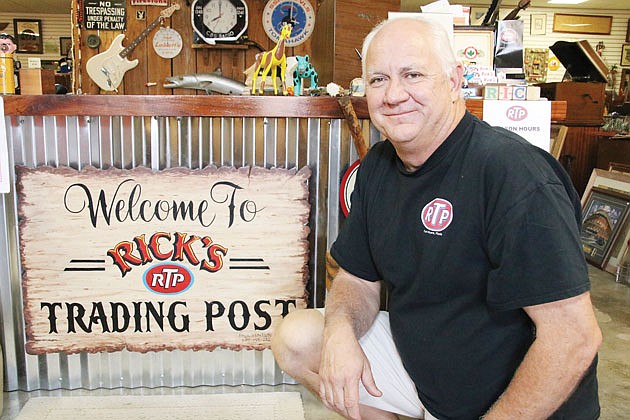- November 23, 2024
-
-
Loading

Loading

There's nothing like a stockpile of 150-year-old glass eyeballs to help see a future in buying and selling vintage things.
Today, those artificial eyeballs from the Civil War are among the first things a would-be customer spots when he or she enters Rick's Trading Post in Fort Myers. You can't miss them. They're in a box and staring right back at you.
To the right is a 1930 Texaco Fire Chief gasoline pump. Nearby is a never-used 1935 outboard boat motor — once on display in a Sears, Roebuck in Chicago. Toward the back of the store is a museum, where items with genuine historic value are kept and sometimes sold.
All together, these are the eclectic treasures of Trading Post owner and lifelong vintage item collector Rick Keating. But as far as scores go, the European-made prosthetic eyeballs — Keating bought 13 boxes from a seller who whose great-grandfather was a New York City ophthalmologist — could be his most memorable. That day's lucrative haul, which Keating bought and flipped for a tidy profit, “helped me to move into my current location,” he says.
The 5,000-square-foot store at 1910 Courtney Drive, near Edison Mall has been home to Rick's Trading Post for most of this decade. Keating opened the business in 2007 after a layoff from a pharmaceutical sales job, starting first in his garage. He soon moved into a 1,000-square-foot warehouse in south Fort Myers and later to the Courtney location.
Keating got excited about collecting things from the past in childhood, and the thrill has remained. So, when he had to find a new line of work, antiques and collectibles seemed natural, says the Venice native.
At 57, Keating says he's where he wants to be, even though he concedes he'll most likely get hit by lightning before getting rich in vintage retail. Says Keating: “I absolutely love what I'm doing for a living.”
There are commercials for the Trading Post on WINK-TV and promotions on social media. “It is creating goodwill for the brand,” Keating says. “They see it and say, 'That's the guy who comes to your house.'”
When you're selling pieces of yesterday, projecting how the bottom line will look next month, next quarter or next year is a guessing game, Keating says.
Selling in volume is his key, he says of the fishing gear, furniture, clocks, guitars, comic books, signed baseballs and baseball cards, military accessories and regalia and other collectibles and antiques inside the former warehouse. The stuff is old already and doesn't need to get any older occupying display space, Keating adds. He says he starts thinking Goodwill donation when he looks at items in the store for more than six months. “I need to make something,” Keating says he tells sellers or buyers who get stubborn wrangling over price.
Inventory comes through the door during business hours from 9 a.m. to 4 p.m. Tuesday through Saturday. But on mornings before opening and afternoons after closing, Keating visits with people who have called in with items for sale. On days off he scours the countryside in search of new old things to put in his store.
He'll call in expert help on occasion. “You absolutely need help,” he says of his roster of advisers on everything from antiques to toys.
“You've got to buy right to sell right,” Keating says. And getting good at it “takes years and years and lots of mistakes buying things.”
In late summer he often takes a couple of weeks off to hunt for inventory nationwide. The work takes street smarts and often fleet feet. “I've been chased by bulls. I've been attacked by roosters,” he says, explaining how “Rooster” became a nickname. “I've been attacked by an emu.”
“But for the most part everybody's been very cool,” he says. “I've met some of the most interesting people on earth doing this.”